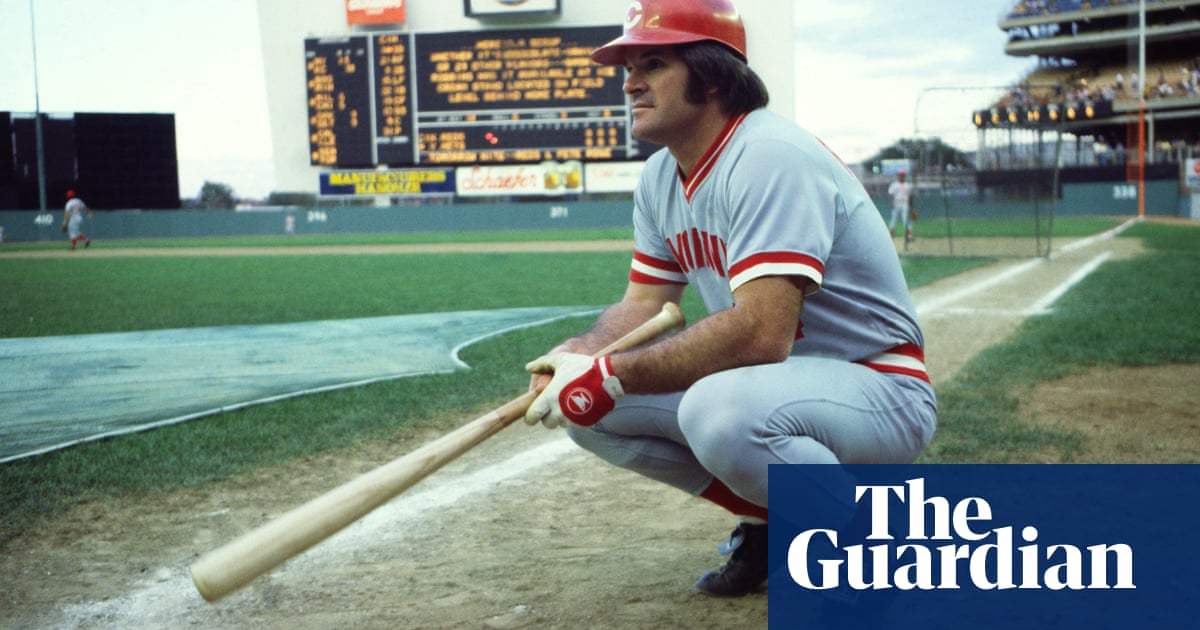Gambling
Charlie Hustle: the definitive Pete Rose book that deconstructs a disgraced legend

On the field, Pete Rose racked up hit after hit. Off the field, he racked up gambling debts. While persistence at the plate would reward him with baseball’s all-time hits record, his gambling resulted in a stiff punishment – a lifetime ban from Major League Baseball, and eventually from the Hall of Fame. A new book revisits this dramatic narrative – Charlie Hustle: The Rise and Fall of Pete Rose, and the Last Glory Days of Baseball, by veteran journalist Keith O’Brien.
“I feel like in the last 35 years since Pete Rose has been banned from baseball, and made mistake after mistake off the field, we forgot why we ever cared about him in the first place,” O’Brien says. “The first thing I wanted to do was go back to that whole story, the whole arc.”
Taking its title from Rose’s nickname, the book has an added resonance in the wake of the latest gambling scandal to hit the major leagues: Ippei Mizuhara, the ex-interpreter for MLB standout Shohei Ohtani, is accused of stealing $16m from the star to settle Mizuhara’s gambling debts. Ohtani insists he did not gamble himself on sports and was not aware of paying any of Mizuhara’s debts incurred by gambling.
It remains illegal for Major League Baseball players to bet on their own sport or team. The latter would trigger the same lifetime ban issued to Rose by then-commissioner A Bartlett Giamatti in 1989. An investigation led by Marine Corps veteran and Department of Justice alumnus John Dowd indicated that Rose, as Reds player-manager, had bet on his own games. Rose denied it, but accepted punishment from Giamatti. The commissioner’s sudden death that fall further turned public opinion against Rose, according to the book.
Today, attitudes toward gambling have changed over the six years since the Supreme Court opened the door to sports betting in the US, according to the author.
“There’s been a massive shift in cultural acceptance of gambling,” O’Brien says. “It is fundamentally changing how we connect to sports, how we talk about sports. I think it’s fundamentally changing American culture right now.”
If Rose was playing today, the author points out, he could have found legal ways to involve himself in gambling, such as taking on a sponsorship by FanDuel or DraftKings.
“If you think about well-known or notorious gamblers in American history,” O’Brien says, “Pete Rose is going to be in that conversation.”
Raised in Cincinnati, the author got to have many conversations with Rose for the book, yielding 27 hours of interviews, before the calls eventually went unanswered.
“Interacting with Pete, you sort of see it all,” O’Brien says. “He’s crass, he’s brash, he’s arrogant, he’s entertaining, he’s a good storyteller … The one thing that is really palpable is that Pete has a charisma about him,” which “our most accomplished politicians have, that our most popular actors and rock stars have”.
“Whether you root for him today or not,” the author says, “objectively he was one of the most iconic athletes of the 20th century who often found himself squarely in the middle of some of baseball’s biggest moments.”
The book vividly details two such moments – Rose’s 12th-inning collision at home plate with Cleveland catcher Ray Fosse to win the 1970 All-Star Game in Cincinnati, and the first of his three World Series championships, in the epic seven-game tilt against the Boston Red Sox in 1975. Both moments were shown before tens of millions of viewers on national TV.
Of the collision with Fosse, O’Brien says, “I would argue, this is the moment when Pete Rose becomes Pete Rose … It gilds the mythology of Charlie Hustle. This was a guy who’d do anything to win, including sliding into a man at home plate in a meaningless game. It will also forever define Ray Fosse, who was never the same, never the same player.”
Five years later, Rose was part of the Big Red Machine that included fellow stars Joe Morgan, Johnny Bench, Tony Perez, George Foster and Ken Griffey Sr. That team squared off against the Red Sox in an instant-classic World Series. Although the series is widely remembered for its pulsating Game 6 – a Sox win in extra innings, punctuated by Carlton Fisk’s home run – there was a seventh game, and it went to Rose and the Reds. Rose took home series Most Valuable Player honors.
In Game 7, he proved that sometimes his contributions went beyond the box score. With Cincinnati trailing, he broke up a double play with a hard slide into second base. The next batter, Perez, hit a home run out of Fenway Park to cut the deficit to one.
“After the game, his own manager, future Hall of Famer Sparky Anderson, tells the press that if Pete Rose doesn’t break up the double play, the Reds probably don’t win the game,” O’Brien says.
The Reds repeated as champions with a sweep of the New York Yankees in 1976. Two years later, Rose compiled a 44-game hitting streak, best in the National League and second only to Joe DiMaggio’s 56 games in 1941. After leaving Cincinnati in the offseason via free agency, Rose won his third Fall Classic as a member of the Philadelphia Phillies in 1980. Even before his departure for Philadelphia, his gambling had become a concern.
“By the mid-1970s, at least one player on his team is concerned about his relationships off the field,” O’Brien says. “By 1978, based on my reporting, Major League Baseball is concerned about his gambling. It seems to continue to get worse.”
In Rose’s first season as a Phillie, his marriage to his wife of 15 years, Karolyn, ended in divorce. The book claims that he had affairs during their marriage, including one in the early 1970s with a high school student who later said she was underage when it began. The book addresses claims of a baby born out of wedlock with another woman, Terry Rubio. A second marriage to Carol Woliung also ended in divorce.
“I chronicled all that in the book – not for salacious reasons, but because I do think it helps paint a picture of just how much Pete was unraveling as a man, at the same moment he was having his greatest success as a player,” says O’Brien, whose long list of interviewees includes both Karolyn Rose and Terry Rubio (now Terry Rubio Fernandez).
Rose returned to the Reds as a player-manager, and made history in 1985 by breaking Ty Cobb’s career hits record of 4,191. (He would finish with 4,256 hits.) Yet the next year represented a much different watershed moment – the book claims that this was when Rose started betting on baseball in addition to other sports.
“I think my reporting makes it clear that Pete Rose was addicted to gambling,” O’Brien says. “A gambling addict is going to make choices that are destructive. I believe that is why Pete Rose ultimately did place bets on baseball.”
The book seeks to puncture what the author views as myths about Giamatti’s subsequent investigation of Rose’s gambling in 1989. O’Brien argues that the new commissioner was not out to get Rose, nor did he have a vendetta against him, while on Rose’s part, he liked Giamatti and appreciated his love of baseball.
However, O’Brien explains, “Bart was also a purist, he was an idealist. When presented with – at first – rumors, then evidence that Pete had bet on baseball, he knew he had to take action. What Pete had done was against the rules of baseball. Baseball’s probably best-known rule is against betting. Pete had violated that. Now he was going to have to pay the price for it.”
When O’Brien and Rose were still on speaking terms, the author would accompany Rose to autograph signings, where people paid to queue up for a signature from the man who remains their idol. Upon request these days, Rose adds an apology for betting on baseball – an acknowledgment that would have been welcome 35 years earlier.
“That belief he could do anything really helped him as a player,” O’Brien reflects. “He was filled with confidence as a player, always believing, as a hitter, that he would prevail, get a hit, get on base … The same quality, the belief he could do anything, the belief he would prevail in the end, was in many ways his undoing off the field.”









